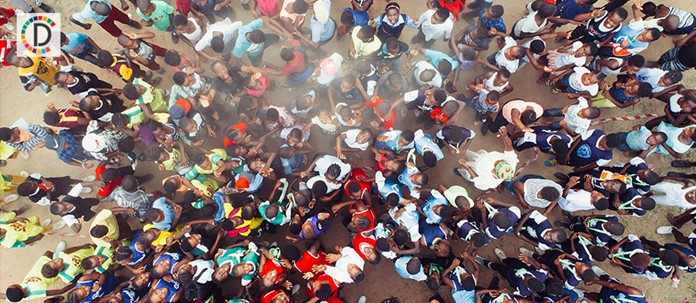Coronavirus: Artists channel pandemic anxieties into creativity

- Country:
- India
Whether it is the paranoia inducing thoughts about getting infected by the deadly coronavirus, or the struggles of living in isolation, the pandemic is impacting all our lives and how. While some are coping with the situation by indulging in activities like reading or cooking, others are channelling their anxieties and struggles into their creative instincts.
Like artist Dhruvi Acharya, who has been creating one painting everyday since Prime Minister Narendra Modi announced a 21-day nationwide lockdown on the evening of March 24. Her small scale watercolour works, which the 49-year-old artist has been posting on the picture sharing platform Instagram, reflect upon the constant fear of catching the disease that is common to one and all. The artist told PTI that between taking care of her children, doing household chores -- without help -- and dealing with her own fears, it is painting that keeps her sane in the age of coronavirus.
"It helps me clear my mind," she said. But, before clearing all that clutter out, she looks deep inside this very mind, which is constantly on the edge, to create art. Her works remind one of the detailed science diagrams, especially those of microorganisms that were common in biology classes in schools and colleges, perhaps a reference to the virus that is at the root of all the problems. "The works are about the psychological impact of the pandemic – social distancing, loneliness, not touching anyone, fear of the virus being transmitted via a touch, a sneeze or a cough, fear of the disease, etc," she explained.
One of her paintings, which she posted on March 29, shows a woman lying on her pillow, but wide awake. Her thought bubble is full of mouths with wagging tongues, a recurring motif in her work, and surrounded by droplets of spit. "The work is about the insomnia brought on with the fear of the virus which is transmitted via saliva, a cough or a sneeze," she added.
The paintings, however, like her thoughts at the time, are spontaneous and "automatic". "I usually don't have anything in particular in mind when I begin my watercolours, there are no preparatory drawings or ideas I want to work on.
"I just intuitively let things that are on my mind materialise on the paper – it's almost like automatic drawing. Once I see images on the paper, then the formal aspect of paintings such as balance, composition, and colour comes into play," she said. Also channelling fears into their art, but in a more interactive way, are the artist duo Jiten Thukral and Sumir Tagra, who have collaborated with Pollinator -- an interdisciplinary consortium that aims to trigger fundamental debates through experimental workshops -- to create a digital handbook of social distancing called "Solitude".
The project that thrives on the idea of using humour as a coping mechanism, invites ideas from people on social media on the various activities that one can engage themselves in to survive this isolation, which are then transformed into animated illustrations by Thukral and Tagra. "The lightness of the animation builds a therapeutic message. It has always been a sufficient source to create humour and vibrancy. Probably in these painful times, it is required for us to heal ourselves," the duo said. These activities, essentially "single-player exercises", are meant to be self-motivated and practised in confined spaces -- just what the doctor ordered during the coronavirus lockdown. Examples range from how to express anger while being locked up with your family, or binge-eating, to finding company in the inanimate things around oneself in moments of frustrating loneliness. "The approach of doing these small exercises is to make people think of ways to create new dimensions during these tough times. We want to keep this exercise meditative with a pinch of darkness which is so evident in today's social paradigm," the artists said. A typical page from "Solitude" involves an animated illustration, accompanied by a list of instructions on how to perform the exercise. For instance, one of their activities "Car Yell" takes one through the process of releasing their anger. According to the instructions, one would need a car to perform this activity. Under the sub-head of "HOW", it reads, "Go to your car, lock yourself in, and shout to release your anger." Time required is five minutes, it said.
When asked why they made the process of ideation an interactive one, they said it was important that they made "space for people to unburden themselves". "As we are all in the same boat and trying to navigate this tsunami of social crises, we want to learn together and do some project which acts as a space to share and open our understanding," they said. While artist Lavanya Mani's artwork "Anomalies 2", created earlier this year, was not intended to reflect on the ongoing pandemic, it is eerily pre-emptive of the catastrophe that was in the waiting. Her work created with rust printing and embroidery, features amoeba like structures, representative of a disease infested body. "It explores the relationship between body and landscape. An anomaly- defined as an odd, peculiar or strange condition that is inconsistent with the norm is often used to describe disease in a living organism.
"Today's charred, burnt and damaged landscapes that are increasingly becoming our reality mirrors the disease laden anomalies of our bodies," she explained..
(This story has not been edited by Devdiscourse staff and is auto-generated from a syndicated feed.)
- READ MORE ON:
- Dhruvi Acharya
- Narendra Modi










